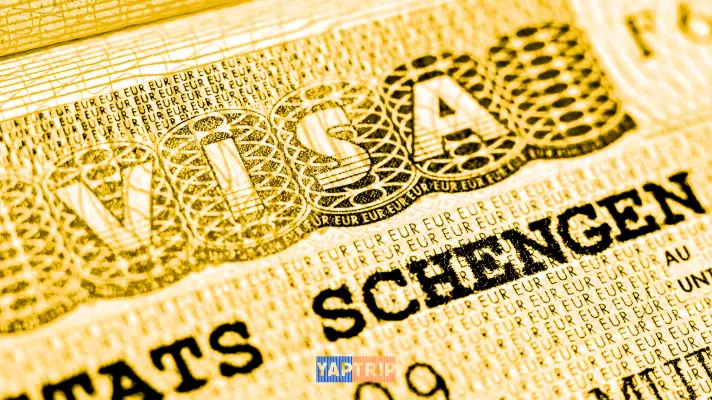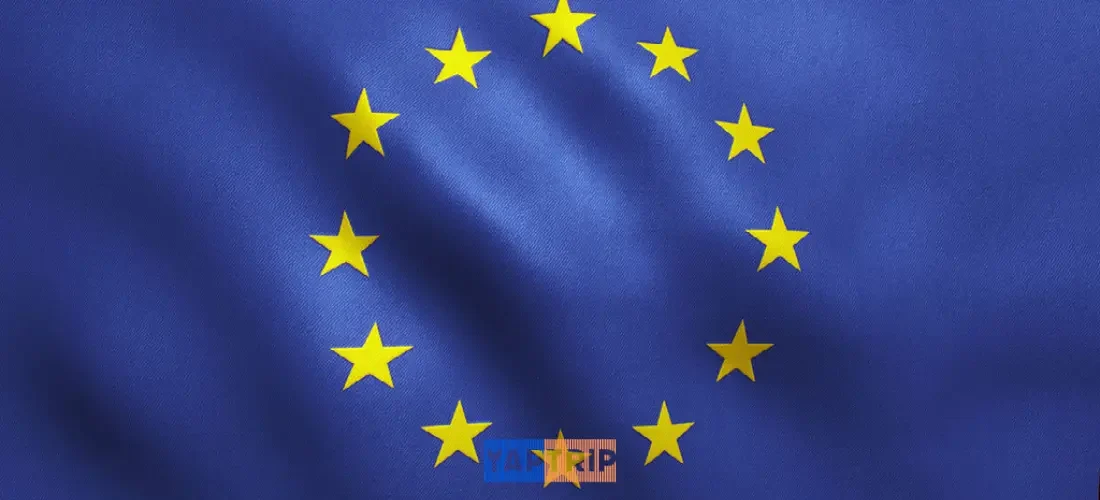A Complete Guide to Getting a Schengen Visa
If you’re a digital nomad looking to explore multiple European countries, the Schengen Area provides a fantastic opportunity for hassle-free travel. In this comprehensive guide, we’ll walk you through everything you need to know about obtaining a Schengen visa, including the application process, requirements, fees, and more.
What Is a Schengen Visa?
The Schengen Visa is a travel document that allows you to visit any of the 26 European countries within the Schengen Area for tourism or business purposes. It grants you the freedom to move between these countries without the need for multiple visas or border controls.
Understanding the Limitations of a Schengen Visa
It’s important to note that a Schengen visa allows for a maximum stay of 90 days within a 180-day period. This means that for every 90 days spent in the Schengen Area, you must spend an equal amount of time outside of it. If you plan to study, work, or reside in one of the countries for longer than 90 days, you’ll need to apply for a national visa specific to that country.
Introducing the European Travel Information and Authorization System (ETIAS)
To enhance border security and streamline entry procedures, the European Travel Information and Authorization System (ETIAS) was established. This electronic system keeps track of visitors from countries that do not require a visa to enter the Schengen Zone. Starting in January 2023, the ETIAS system will be implemented, with full operation expected by November 2023.
Schengen Visa Application Process
Determine the Appropriate Embassy or Consulate
Before applying for a Schengen visa, you’ll need to identify the embassy or consulate of the country you plan to visit first or spend the most time in. The application will be processed by the representative office of that specific country.
Gather the Required Documents
To apply for a Schengen visa, you’ll need to gather the following essential documents:
- Completed application form: Obtain the application form from the embassy or consulate’s website and fill it out accurately.
- Valid passport: Ensure your passport is valid for at least three months beyond your intended departure date and has two blank pages.
- Proof of travel insurance: Provide evidence of travel insurance that covers medical expenses and repatriation, with a minimum coverage of €30,000.
- Flight itinerary: Present a confirmed round-trip flight reservation or itinerary.
- Accommodation details: Include proof of accommodation, such as hotel bookings or a letter of invitation from a host in the Schengen Area.
- Proof of financial means: Demonstrate sufficient funds to cover your expenses during the stay, such as bank statements, traveler’s cheques, or sponsorship letters.
- Travel itinerary: Outline your planned activities and destinations within the Schengen Area.
- Proof of employment or income: Provide documentation of your employment, such as a letter from your employer, or evidence of sufficient income if you’re self-employed.
- Passport-sized photos: Submit recent photos that meet the embassy’s specifications.
Schedule an Appointment
Once you have gathered all the required documents, schedule an appointment with the embassy or consulate to submit your application. It’s recommended to make the appointment well in advance to secure your preferred date and time.
Attend the Visa Interview
During your visa interview, the consular officer will review your application and supporting documents. They may ask you questions about your travel plans, purpose of visit, financial means, and ties to your home country. Be prepared to provide clear and honest answers.
Pay the Visa Fee
At the end of your visa interview, you’ll be required to pay the visa fee. The fee amount may vary depending on the country and type of visa you are applying for. Ensure you have the correct payment method available, as some consulates may only accept cash or specific forms of payment.
Track the Status of Your Application
After submitting your application, you can track its status using the reference number provided to you. Check the embassy or consulate’s website for information on how to track your application online.
Schengen Visa Requirements
To qualify for a Schengen visa, you must meet certain requirements set by the respective embassy or consulate. While requirements may vary slightly, the general criteria include:
- Valid passport: Your passport should be valid for at least three months beyond the intended departure date from the Schengen Area.
- Travel insurance: You must have travel insurance with a minimum coverage of €30,000, including medical expenses and repatriation.
- Proof of accommodation: Provide evidence of where you will be staying during your visit, such as hotel reservations, rental agreements, or a letter of invitation.
- Proof of financial means: Show that you have sufficient funds to cover your expenses while in the Schengen Area, typically through bank statements or proof of income.
- Flight itinerary: Present a confirmed round-trip flight reservation or itinerary.
- Travel purpose: Clearly state the purpose of your visit, whether it’s for tourism, business, or other permitted activities.
- Travel itinerary: Provide a detailed plan of your intended activities and destinations within the Schengen Area.
- Proof of ties to your home country: Demonstrate strong ties to your home country, such as employment, property ownership, family, or other commitments, to show that you have reasons to return.
Schengen Visa Fees
The visa fee for a Schengen visa varies depending on the country and the type of visa you are applying for. It’s essential to check the embassy or consulate’s website to determine the exact fee amount and acceptable payment methods.

Exploring Schengen Visa and Travel Opportunities
Are you a digital nomad eager to explore multiple European countries without the hassle of acquiring individual visas? The Schengen Visa offers an excellent solution. In this guide, we’ll delve into the Schengen Visa, the countries it covers, and the additional travel opportunities it provides.
Understanding the Schengen Zone
The Schengen zone consists of 26 European countries that have signed the Schengen Agreement. These countries have abolished passport and border controls between their borders, allowing for seamless travel within the zone. Acquiring a Schengen Visa grants you access to all these countries, making your travel experience more convenient and efficient.
Discovering the Schengen Countries
Here is a comprehensive list of the Schengen countries:
- Austria
- Belgium
- Czech Republic
- Denmark
- Estonia
- Finland
- France
- Germany
- Greece
- Hungary
- Iceland
- Italy
- Latvia
- Lithuania
- Luxembourg
- Malta
- Netherlands
- Norway
- Poland
- Portugal
- Slovakia
- Slovenia
- Spain
- Sweden
- Switzerland
- Liechtenstein
By visiting any of these countries, you can freely travel between them without the need for passport checks or border control. This level of accessibility makes it incredibly convenient for non-EU citizens to explore the diverse offerings of the Schengen Zone.
Expanding Your Travel Possibilities
While the Schengen Zone provides incredible travel opportunities, it’s important to note that there are additional non-Schengen countries that accept a valid multiple-entry Schengen Visa for entry and stay. These countries recognize the value and reliability of the Schengen Visa, granting access to their territories without the need for a separate national visa.
Some of these non-Schengen countries include:
- Albania
- Antigua and Barbuda
- Belarus
- Bosnia and Herzegovina
- Bulgaria
- Colombia
- Croatia
- Northern Cyprus
- Georgia
- Gibraltar
- Kosovo
- Mexico
- Montenegro
- North Macedonia
- Romania
- São Tomé and Príncipe
- Serbia
- Turkey
Even though these countries are not officially part of the Schengen Area, having a Schengen Visa allows you to explore them hassle-free. This demonstrates the wide-reaching benefits and flexibility of the Schengen Visa, making it an invaluable travel document for digital nomads seeking to maximize their European adventures.
Understanding Schengen Visa Types for Flexible Travel
If you’re considering a trip to the Schengen Area, it’s important to familiarize yourself with the various Schengen visa types. Each type is designed to cater to specific travel purposes and offers different entry and stay privileges. Let’s delve into the details of Schengen visa types to help you plan your journey effectively.
Single-Entry Visa for One-Time Entry
The single-entry visa permits you to enter the Schengen Area once within the specified period. Once you leave the Schengen Area, re-entry is not allowed, even if you haven’t utilized the maximum permitted stay. Remember, a single-entry visa doesn’t restrict you to visiting only one country within the Schengen Zone.
Double-Entry Visa for Additional Entry
Similar to the single-entry visa, the double-entry visa allows you to enter the Schengen Area once. However, the key difference lies in the possibility of re-entry after leaving the zone once. Keep in mind that a third entry is not permitted with a double-entry visa.
Multiple-Entry Visa for Frequent Travel
A multiple-entry visa provides the flexibility to enter and exit the Schengen Area as desired, as long as you adhere to the 90/180 days rule. The frequency of your travel determines the type of multiple-entry visa you may be granted:
- 1-year multiple-entry visa: Requires proof of three previous visas obtained within the last two years.
- 3-year multiple-entry visa: Based on the usage of a one-year multiple-entry visa within the previous two years.
- 5-year multiple-entry visa: Granted to those who have lawfully used a multiple-entry visa for at least two years in the past three years.
Uniform Schengen Visas for Transit and Short Stays
The Uniform Schengen Visa (USV) is categorized into two types: “A” and “C.”
- USV Category “A” (Airport Transit Visa): Allows transit through the international zone of a Schengen airport without entering the Schengen Area. It is mandatory for travelers transiting between non-Schengen states through a Schengen country airport.
- USV Category “C” (Short-term Visa): Permits a certain period of residence in the Schengen Area. It can be obtained as a single-entry, double-entry, or multiple-entry visa.
Limited Territorial Validity Visas for Specific Cases
Limited Territorial Validity Visas (LTV) are granted under specific circumstances and restrict travel to the Schengen State that issued the visa. Holders of an LTV cannot enter or transit through any other Schengen country that is not their first and final destination. LTVs are exceptional cases granted for humanitarian reasons or under international obligations.
A Comprehensive Guide to Schengen Visa Requirements
Planning a trip to the Schengen Area? Familiarizing yourself with the Schengen visa requirements is essential to ensure a smooth application process. Whether you need a visa for transit or to visit the Schengen countries, understanding the specific requirements will help you gather the necessary documents and increase your chances of approval. Let’s explore the key requirements in detail.
Who Needs a Schengen Visa?
While many nationals of countries do not require a visa to enter the Schengen Area, some are required to apply for a Schengen visa. Examples of countries that require a Schengen visa include Albania, Belize, Bolivia, China, Dominican Republic, India, Kenya, Nigeria, Pakistan, Philippines, Qatar, Russia, South Africa, Thailand, and Uganda. To check the complete list of countries, refer to the official website.
Schengen Visa for US Citizens and Green Card Holders
US citizens do not require a visa to enter any country in the Schengen Area. They can stay for tourism or business purposes for up to 90 days within a 180-day period. However, the visa requirement for US green card holders depends on their nationality. If a green card holder is also a national of a country that requires a Schengen visa, they must apply for one. Refer to the official website for a complete list of visa requirements for different nationalities.
Schengen Visa Requirements
When applying for a Schengen visa, it’s crucial to fulfill specific requirements to ensure a successful application. Here are the key Schengen visa requirements:
- Valid Passport: Your passport should have been issued within the past ten years and be valid for at least three months after your intended departure from the Schengen Area.
- Application Form: Fill out the Schengen visa application form accurately. Mistakes can lead to delays or denials.
- Proof of Financial Means: Demonstrate that you have sufficient funds to support yourself during your visit. This can include a personal bank statement, credit card, cash, traveler’s checks, payslips, proof of employment, or supporting documents from a sponsor.
- Proof of Accommodation: Provide evidence of your accommodation arrangements, such as a hotel booking, sponsorship invitation with a copy of the host’s passport, or details of a pre-paid tour or operator.
- Round Trip Reservation or Flight Itinerary: Show proof of your return flight ticket or itinerary.
- Passport-Sized Photos: Include two identical photos that meet specific requirements, such as size, color, background, and facial expression.
- Cover Letter: Write a cover letter explaining the purpose of your travel, how you will fund your trip, your itinerary, and your intent to return to your home country.
- Other Supporting Documents: Depending on your employment status (employee, self-employed, retiree, or spouse of an EU citizen), additional documents such as employment contracts, bank statements, income tax returns, or pension statements may be required.
- Schengen Visa Insurance: Obtain health or travel insurance that covers medical emergencies with a minimum coverage of 30,000 EUR.
Schengen Visa Application Form and Assistance
The Schengen visa application form is a crucial part of the process. Download the application form from the official website and ensure you fill it out accurately. Citizen Remote offers assistance with visa applications and has a range of resources to guide you through the process.

A Step-by-Step Guide to Applying for the Schengen Visa
Embarking on your Schengen visa application journey? We’ve got you covered with a detailed step-by-step guide to ensure a smooth and successful application process. Let’s dive in and explore each step in detail.
Step 1 – Acquire the Necessary Documents
Before starting your application, gather all the required documents to streamline the process. It’s also advisable to keep copies of the documents for reference. Here’s a comprehensive list of the documents you’ll need:
- Schengen Visa Application Form
- Valid Passport
- Two Schengen Visa Photographs
- Proof of Financial Means
- Proof of Accommodations
- Schengen Visa Cover Letter
- Return Flight Ticket or Itinerary
- Proof of employment status
Step 2 – Complete the Schengen Visa Application Form
Once you have all the documents ready, it’s time to fill out the Schengen Visa Application Form. Download the form from the official website and carefully complete it by hand. Pay close attention to avoid mistakes, as errors can lead to visa denial. Here’s a guide to help you navigate the form accurately.
Step 3 – Book Your Schengen Visa Appointment
To proceed with your application, you’ll need to book an appointment. Most countries provide online appointment booking services, or you can visit the nearest Embassy or Consulate of your destination country in person.
Step 4 – Attend Visa Appointment
On the scheduled date and time of your appointment, attend the visa interview. Arrive punctually at the designated facility. During the interview, a visa consular officer will review your documents and ask personal questions related to your trip. The interview usually lasts around 10-15 minutes.
Step 5 – Pay Your Schengen Visa Fee
After the interview, the next step is to pay the Schengen visa fee. This non-refundable administration fee is a crucial part of the application process. The current fee is €80 per person, with reduced fees or exemptions for certain categories. Refer to the official website for a complete list of fees.
Step 6 – Wait for Your Visa
With all the necessary steps completed, it’s time to patiently await the outcome of your Schengen visa application. The Embassy or Consulate where you applied will directly contact you with their decision. The processing time can vary, so stay informed and prepared for any additional requirements or notifications.
Schengen Visa Processing Time and Fees: What You Need to Know
As a digital nomad planning your next adventure in the Schengen Area, understanding the processing time and fees associated with the Schengen visa is essential. Let’s delve into the details to ensure a smooth application process.
Schengen Visa Processing Time
The processing time for a Schengen visa application is generally swift, with most applications being processed within 15 days. However, it’s important to note that certain circumstances may lead to longer processing times. Some countries have the discretion to extend the processing period up to 45 days, so it’s advisable to plan your application well in advance to allow for any potential delays.
Schengen Visa Fees
To obtain a Schengen visa, there is a standard fee that applicants must pay. Currently, the standard Schengen visa fee is €80 ($80). However, there are certain exemptions and reduced fees applicable to specific categories:
- Children between the ages of six and twelve: They are eligible for a reduced fee of €40 ($40).
- Children under the age of six: They are entirely exempt from paying any visa fees.
These fee structures ensure that families traveling with children receive appropriate considerations.

Conclusion
Understanding the processing time and fees associated with the Schengen visa is crucial for digital nomads planning to explore the Schengen Area. While most applications are processed within 15 days, it’s essential to be aware that some countries may require additional time. By being proactive and planning ahead, you can ensure a smooth and timely visa application process. Additionally, familiarize yourself with the visa fees, including exemptions and reduced fees for children, to accurately budget for your Schengen adventure. Now that you have these insights, you can confidently embark on your journey, equipped with the necessary knowledge to navigate the Schengen visa process.

